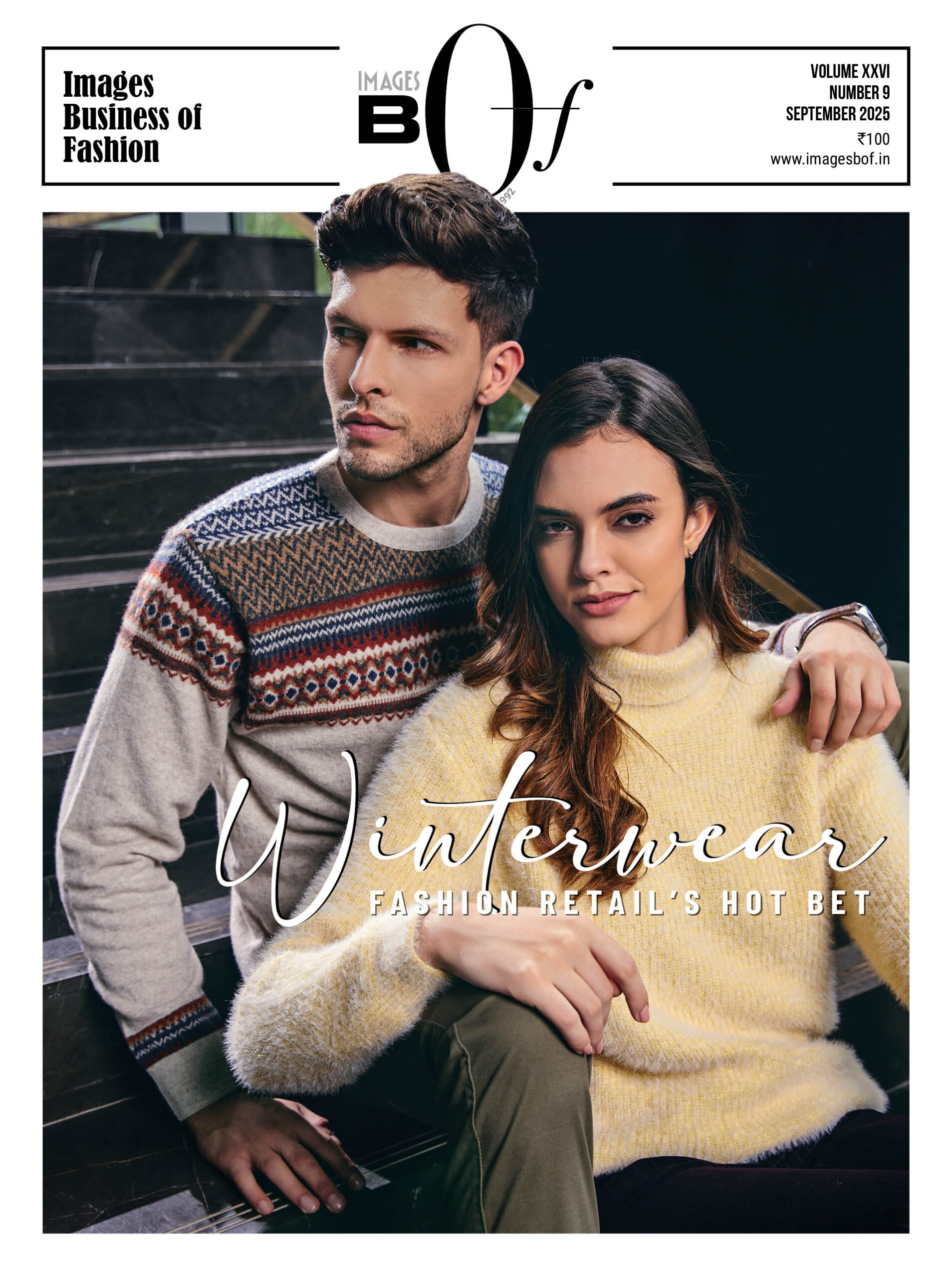As global streetwear gains traction among Indian Gen Z consumers, Culture Circle—a platform for authenticated luxury fashion—is emerging as a breakout success.
Co-founded by sneaker enthusiasts and engineers Ackshay Jain and Devansh Jain Nawal, Culture Circle is backed by Info-Edge. Earlier this year, the luxury platform also made waves on Shark Tank India by securing a Rs 3 crore strategic investment from Snapdeal’s Kunal Bahl and OYO’s Ritesh Agarwal.
With over one million monthly users, rapid offline expansion underway, and a focus on product verification, the platform is riding the wave of India’s booming luxury streetwear demand.
In a candid conversation with IMAGES Business of Fashion’s Kajal Ahuja, Co-Founder Ackshay Jain talks about Culture Circle’s rapid growth, offline expansion, and gives key insights on building a luxury fashion platform from the ground up.
Excerpts from the chat…
How did the idea of Culture Circle come about, and what made you feel there was a need for it?
My co-founder and I are sneakerheads. We used to save money and buy maybe two pairs a year. My first-ever sneaker purchase was a UK 11, a size which is hard to find. I was looking for a One Piece sneaker online and couldn’t find it, even though I looked on many websites. On two sites, I found it priced at Rs 31,000 and Rs 40,000. Then I checked with Instagram resellers—but again, size was an issue.
Finally I found one reseller who said I could get the shoe for Rs 15,000. As a first-time buyer, this confused me. Why such a big price gap? I immediately assumed the Rs 15,000 pair must be fake. There was no transparency or trust.
My co-founder had a similar experience which became a shared pain point.
So one weekend, we sat down and built a basic platform—he handled the frontend, and I built the backend and databases. We scraped popular websites and displayed prices—something like Skyscanner for flights. The idea was simple: if someone wants to buy a product, they search Culture Circle, see all seller listings, and connect with the seller directly.
The goal was to solve the problem of inconsistent pricing, limited availability and lack of authenticity. Without any marketing—just posting on our personal profiles—we got organic traction of around 7,000 monthly visitors. That’s when we decided to monetise by facilitating purchases directly and charging a commission from sellers.
How exactly does the platform work?
We don’t source directly from brands. Instead, we onboard sellers onto our platform.
- Customers browse listings and place orders with us like they would on Amazon.
- We then pass the order to the seller and manage everything—authenticity checks, logistics, and delivery.
- For customers, the experience is seamless and free.
- Our revenue comes from seller commissions.
You’ve expanded into watches among other categories. What led to that decision, and are more categories coming?
Yes, we began with sneakers but soon realised this problem exists across categories. Essentially, our platform solves the challenge of access—making global products available to Indian consumers.
So we expanded to apparel—Kenzo T-shirts, Essentials hoodies—where either availability is limited in India or fakes are rampant. Then came handbags, like Jacquemus, which are popular in Europe but hard to find here. We followed with cosmetics like Rare Beauty, especially items like their blushes which aren’t available in India.
We also ventured into watches, like Rolex. In this case, the issue isn’t pricing but availability—there’s often a two-year waitlist at official stores. We offer the same product with a small premium for immediate access.
Currently, we’re doubling down on perfumes. There’s a lot of demand for premium fragrances that are available in markets like Dubai but not in India. We’re focusing on bringing authentic, high-demand collections from Dior, Chanel, and others.
Why is there such a price inconsistency in this segment?
It comes down to supply and demand. When supply is limited and demand is high, prices fluctuate. Also, each seller has their own procurement method, so costs vary. Instead of trying to control procurement, we aggregated sellers on one platform. By listing all prices from all sellers, we naturally offer competitive pricing.
How do you ensure authenticity?
We have a multi-pronged approach:
- Seller Verification: Every seller is KYC-verified before onboarding onto our selling app, Source Sells. They’re also required to provide 20 references from previous buyers.
- AI Authentication: We’ve partnered with CheckCheck, a global leader in sneaker authentication. Every order is verified by them, and customers receive a digital authenticity certificate before shipping.
- Manual Checks: For new sellers or high-risk categories, we receive the product at our warehouse and conduct manual inspections before dispatching it.
Tell us about your current market presence and user base.
We launched in January 2024 and are primarily online—90% of our sales come through the app and website. In September 2024, we opened our first physical store in Ambience Mall, Vasant Kunj, Delhi, followed by a second one in March in Banjara Hills, Hyderabad.
We have six more stores in the pipeline this year in Mumbai, Pune, Bangalore, two in Gurgaon, and one more location being finalised. We’re rapidly expanding offline.
We’re also preparing for international expansion. By July-August, we’ll launch pilot tests in Dubai, Qatar, and two more countries. The goal is to replicate our India model, connect with sellers in those markets, test traction, and identify product-market fit before scaling up.
What kind of response have you seen in your offline stores? Any early insights?
Offline retail has been a new but rewarding experience. It’s a different kind of customer interaction, and we personally enjoy working in the stores on weekends. We set our own sales targets, talk to customers, and gather direct feedback.
For example, when someone shows interest in a sneaker, we ask what else they’re looking for—Kenzo, Casio, Tiffany, etc. This helps us understand trends and gaps. Offline retail gives us face time with the customer, which is invaluable. It helps us identify why someone didn’t purchase—was it a sizing issue, inventory limitation, or collection mismatch?
These insights help us build a better business long-term, and offline allows us to be close to our consumer community.
As a digitally native brand, how are you integrating both offline and online experiences?
Every offline purchase is synced with our database, which allows us to engage customers across categories. For example, we’ve onboarded several homegrown streetwear brands like Drip Project and Farak. Once a customer purchases in-store, we send communications via WhatsApp, email, and newsletters.
One unique initiative we run is a recurring offline event called Culture Ground, hosted in our store. It’s a monthly IP where we conduct activations like live raffles, product giveaways, and new launches—like the one we did with Gully Labs. We also curate a music lineup. I personally invite our top 100–200 customers, both online and offline, to these events. It helps us deliver a physical, immersive brand experience while linking online and offline journeys.
What’s your current user base?
We get around 1 million monthly visitors and have served nearly 100,000 unique purchasers in the past year. About 60% of the traffic comes from our app, and 40% from the website. Our focus is on driving app adoption since the experience is more seamless there.
You’ve also raised funding recently. How are you utilising it, and are there more rounds planned?
We closed our funding round the middle of 2024. The capital is still in fixed deposits—we haven’t touched it yet because we’re profitable and growing month over month. The funds are earmarked for our international expansion and upcoming physical store launches, which will require some CapEx. They will be used strategically when we take those next steps.
Lastly, how do you see the definition of luxury retail changing for younger audiences compared to older generations?
Luxury retail has become more aspirational and accessible for first-time buyers, especially Gen Z. A decade ago, aspirations were centered around items like premium watches or expensive alcohol – typically for a mature audience. Today, it’s shifted to fashion and lifestyle products. Young consumers are saving up for sneakers, T-shirts, cosmetics – items that offer social validation.
Gen Z is spending more because they’ve gained access and financial capacity. Look at things like the PS5 which is a Rs 60,000 product. Years ago, that kind of discretionary spend was rare. Now it’s common. Ultimately, luxury today is about status signaling. People want to own things that spark admiration and conversation. And that trend is only going to grow.





